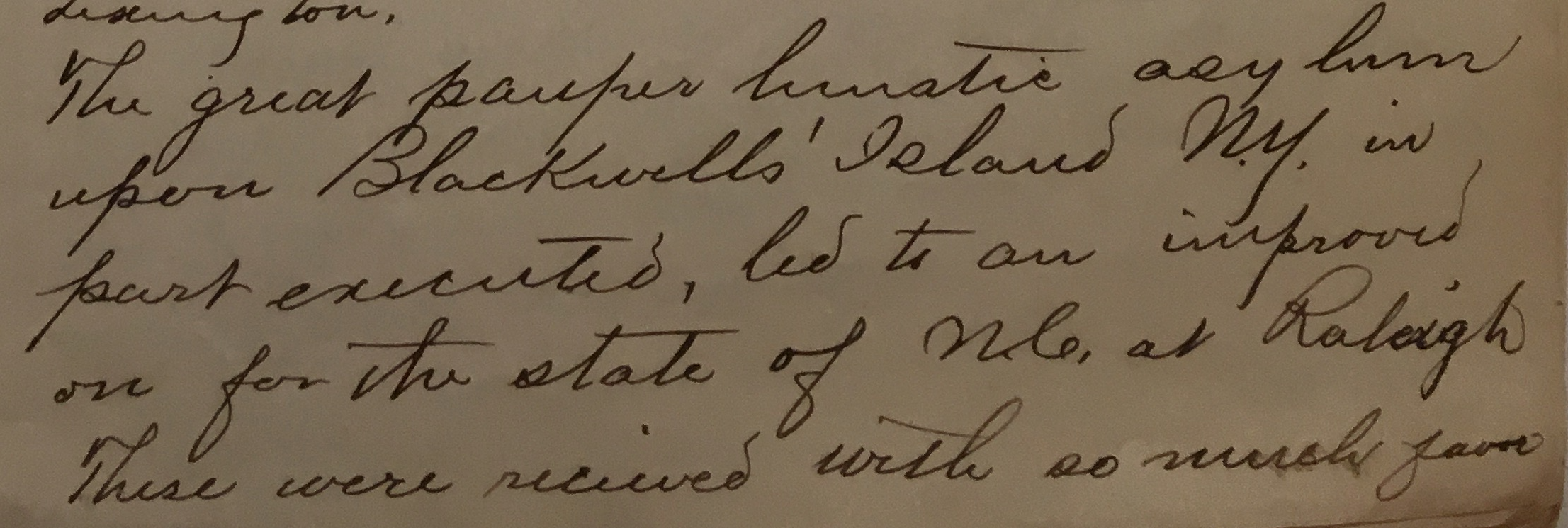The third patient admitted and the first female patient was recorded as “Annie M. Kirkland.” She was a 37 year-old widow from Orange County, North Carolina. The supposed cause for her admission was “domestic troubles,” and she was diagnosed with “mania.” She had been suffering from this condition for ten years. The right-hand side of the ledger revealed that she was a patient in the asylum for thirty-three years, eight months, and twenty-nine days, dying there in 1890 from influenza and heart failure. The notes field indicates that a great aunt was also insane.
As we have learned, reconstituting the lives of individuals admitted to the asylum requires that we remove them from one archive (that of the asylum) and to trace them through another: the unbounded digital “anti-archive” of genealogy and family history—some 17 billion records in Ancestry.com alone. An initial search for “Annie M. Kirkland,” based on the scant information in the admissions ledger, revealed that her identity was cloaked under that of her husband: Alexander Kirkland. She was a much more prominent figure in her own right: a member of the Cameron family, one of the most affluent and influential families of the nineteenth century in North Carolina. The “main street” of the UNC Chapel Hill campus is named for Anna’s cousin, Paul Cameron, who inherited the largest plantation in the state along with the 900 human beings owned by his father, Duncan Cameron.
The papers of the Cameron Family—all 33,000 pieces of it—are held by UNC’s Southern Historical Collection, but Anna Cameron is buried in the collection underneath business letters, bills of sale, legal documents documenting the lives of her male relatives. There is an academic history of the Cameron and Benehan families, but Anna doesn’t warrant more than a mention. Lucas Kelley, then a PHD student in History and a graduate research fellow in the CHW, spent the better part of a year searching through the collection for any letters by, to, or about Anna Cameron. He discovered more than one hundred, some of which provide extraordinary glimpses into the experience of madness from a privileged, well-educated (for the times), articulate woman.
Contrary to stereotypes of relatives having female family members committed to insane asylums through subterfuge or against their will, ten years prior to her admission to Dix, Anna Cameron requested funds from her cousin to provide for an extended stay at the Western Insane Asylum in Staunton, Virginia, to be treated by prominent “alienist” Francis Stribling. Stribling’s papers, held by the State Library of Virginia, include his correspondence with Anna’s mother and her uncle Duncan Cameron, who, we believe, paid for her treatment. The letters also reveal that far from being a family secret, her chronic bouts of depression were well-known and sympathized with by the state’s most prominent families, including that of Governor John Motley Morehead, who commissioned the design and construction of Dix Hospital.
In 2021 Leah Tams further curated the Anna Cameron Kirkland letters in preparation for their being added to the Odum Institute Dataverse portal. She also created a chronological narrative to accompany the letters, which is available upon request. An agreement with UNC Libraries (Southern Historical Collection) allows for photographs of the original letters and transcriptions to be accessed via Dataverse.

